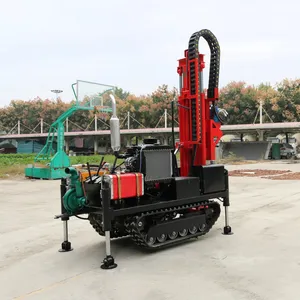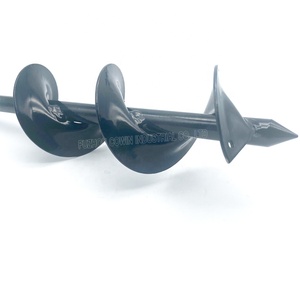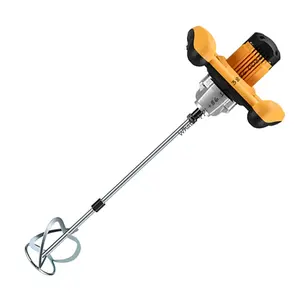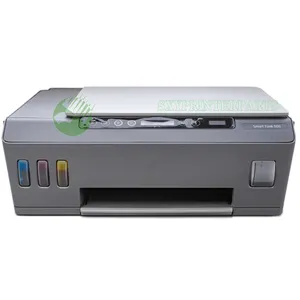Popular in your industry































































































































































































































Top categories
About planter auger
Introduction
Gardening is a rewarding activity, but it can also be physically demanding. The right tools can make all the difference, and one such tool that is revolutionizing the gardening world is the planter auger. This comprehensive guide will delve into the world of planter augers, explaining what they are, how they work, and why they could be a game-changer for your garden. We'll also guide you on how to choose the right planter auger for your needs, how to use it safely and efficiently, and how to maintain it for longevity.
Understanding the Planter Auger: What It Is and How It Works
A planter auger is a must-have tool for homeowners and contractors. These augers come in various lengths and widths to suit diverse needs. They are primarily used for digging holes to the exact depth and width for planting bulbs, annuals, and vegetables. However, their versatility extends beyond just planting, assisting in many other tasks.
Why Use a Planter Auger: The Benefits for Your Garden
Using a planter auger in your garden can be a game-changer. It allows you to dig holes quickly and effortlessly, saving you from the pain of using a trowel. The auger's action creates a ring of soft backfill, perfect for root growth. It can also be used to loosen soil in old containers, making it versatile for various gardening tasks. The speed and ease of use make it a valuable tool for any gardener.
Choosing the Right Planter Auger for Your Needs
Choosing the right planter auger depends on your specific needs. For planting plugs, annuals, perennials, bulbs, or bedding plants, a 2- or 3-inch auger is suitable. If you need to bury stakes, set small posts, or plant larger bedding plants or shrubs, a 4-inch or larger auger may be more appropriate. Also, consider the length of the auger. Shorter augers require you to dig on your hands and knees, while augers 24 inches and longer allow you to dig holes while standing. If back pain is a concern, opt for a longer auger or one with an extension to minimize strain.
Types of Planter Augers
Garden augers come in a variety of types to handle jobs of all sizes. These handy planting augers make it easy to dig holes for planting trees, shrubs, and flowers. For most garden planting jobs, our 2”x7” or 3”x7” garden augers are perfect. If you want to plant an entire flower bed without straining your back, you may want one of our longer planting auger drill bits. For larger trees or shrubs, you may want to opt for one of our larger auger sizes.
Factors to Consider When Buying
When choosing the right auger, consider its application. For planting plugs, annuals, perennials, bulbs, or bedding plants, a 2- or 3-inch auger is suitable. For larger bedding plants, shrubs, or setting small posts, a 4-inch or larger auger may be preferred. Also, consider the length. Shorter augers require you to be on your hands and knees as you dig, while augers 24 inches and longer allow you to dig holes in a standing position. If back pain is a concern, opt for a longer auger or one with an auger extension to minimize strain.
How to Use a Planter Auger: Step-by-Step Guide
Using a planter auger is simple. Attach the hex head to a cordless drill, set the drill speed to its lowest setting for maximum torque, and adjust the chuck to a resistance setting suitable for your strength. Place the auger's tip into the ground and activate the drill. Keep the auger vertical as it digs. Modern drills have a clutch that prevents the drill from spinning through resistance. Let the auger dig until you've reached the desired depth, then safely remove the tool from the hole.
Preparation
Before using a planter auger, ensure it fits your drill's chuck. Set the drill speed to its lowest setting for maximum torque, and adjust the chuck to a resistance level suitable for your strength. Place the auger's tip into the ground and activate the drill. Keep the auger vertical as it digs. Be prepared for slight kickback as the auger starts to bite into the soil. There's no need to push downward aggressively; let the auger dig until you've reached the desired depth. Then, safely remove the tool from the hole.
Operation
Using a planter auger is straightforward. The augers are designed with a hex head that fits most standard drill chucks. To operate, attach the hex head to a cordless drill, set the drill speed to its lowest setting for maximum torque, and adjust the chuck to a resistance setting suitable for your strength. Place the auger's tip into the ground and activate the drill. Keep the auger vertical as it digs. Modern drills have a clutch that prevents the drill from spinning through resistance, making the operation safe and efficient.
Safety Measures
Safety is paramount when using a planter auger. It's crucial to follow safety guidelines to ensure you can efficiently use your planter auger without any accidents or injuries. Remember, proper use not only extends the lifespan of your tool but also guarantees your safety.
Maintenance and Care for Your Planter Auger
Maintaining your planter auger is crucial for its longevity. Regular inspection ensures blades are sharp and properly attached. Secure the auger's fit to the drill chuck for optimal results. Clean your auger after use, and store it in a dry place. Keep your auger oiled to prevent rust. For larger augers with detachable parts, replace worn out parts when necessary. Following these simple maintenance tips will increase your auger's lifespan and save you money.
Cleaning and Storage
Good auger maintenance means thorough cleaning. To prevent unnecessary wear on your auger’s coating, wipe away soil and debris when you’re finished using it. Soak it in hot soapy water and dry it thoroughly. Store your auger in a dry place — like a garden shed. One good way to prevent rust is to keep your auger oiled. Before storing it for the winter, apply a thin coat of mineral machine oil to the surface. If you live in a humid area, you may want to oil your auger after each use.
Regular Check-ups and Repairs
Regular check-ups and repairs are crucial for your planter auger's longevity. Inspect your auger thoroughly, ensuring blades are not bent and are properly fastened. If there's damage, consider re-welding or replacement. Secure your auger's fit to the drill chuck, and replace the hex drive if there's wear. For larger augers with detachable parts, you may need to order replacement parts occasionally. Inspect removable blades for wear and ensure fasteners are secure. Replace the digging tip when it becomes worn or if its attached pin breaks or goes missing.
Conclusion
In conclusion, a planter auger is an invaluable tool for any gardener, whether you're a homeowner or a contractor. Its versatility and ease of use can transform your gardening experience, making tasks like planting bulbs, annuals, and vegetables a breeze. Choosing the right auger for your needs is crucial, and with the right care and maintenance, it can serve you for years. Remember, safety is paramount when using a planter auger, so always follow the recommended safety guidelines. With a planter auger in your gardening arsenal, you're well on your way to a more efficient and enjoyable gardening experience.




































